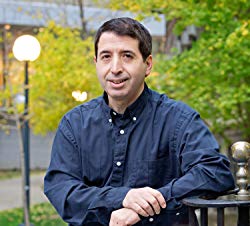It’s been called the second-oldest profession in the world. And counterfeiters are copying much more than just money these days. TTC tokens – which are as good as gold to the thousands who ride Toronto’s subways, streetcars, and buses every day – are the latest target. In fact, the Toronto Transit Commission reports that about 2,000 fake tokens are dropped into fare boxes in the city every day. That adds up to almost $2 million a year in lost revenue.
The fakes certainly look real, but TTC officials, knowing that they had a problem, turned over a batch of tokens to researchers at U of T’s Materials Science and Engineering department. A team led by Prof. Zhirui Wang examined the tokens under an electron microscope, and discovered imperfections in the fake tokens. The ridges on the outer rim of the counterfeits aren’t quite right; the spacing of the letters is off; and the top of the second “t” in “Toronto” is cut off. The fakes also use more copper and zinc, and less nickel, than the originals. In early November, Toronto police arrested two men suspected of bringing in $10,000 worth of counterfeit tokens from China.
Of course, this is not the first time that science has joined the fight against counterfeiting. The most famous scientist to battle such criminals was Isaac Newton, who spent his final years as Master of the Royal Mint in London. Under his watch, several unlucky counterfeiters were sent to the gallows.





